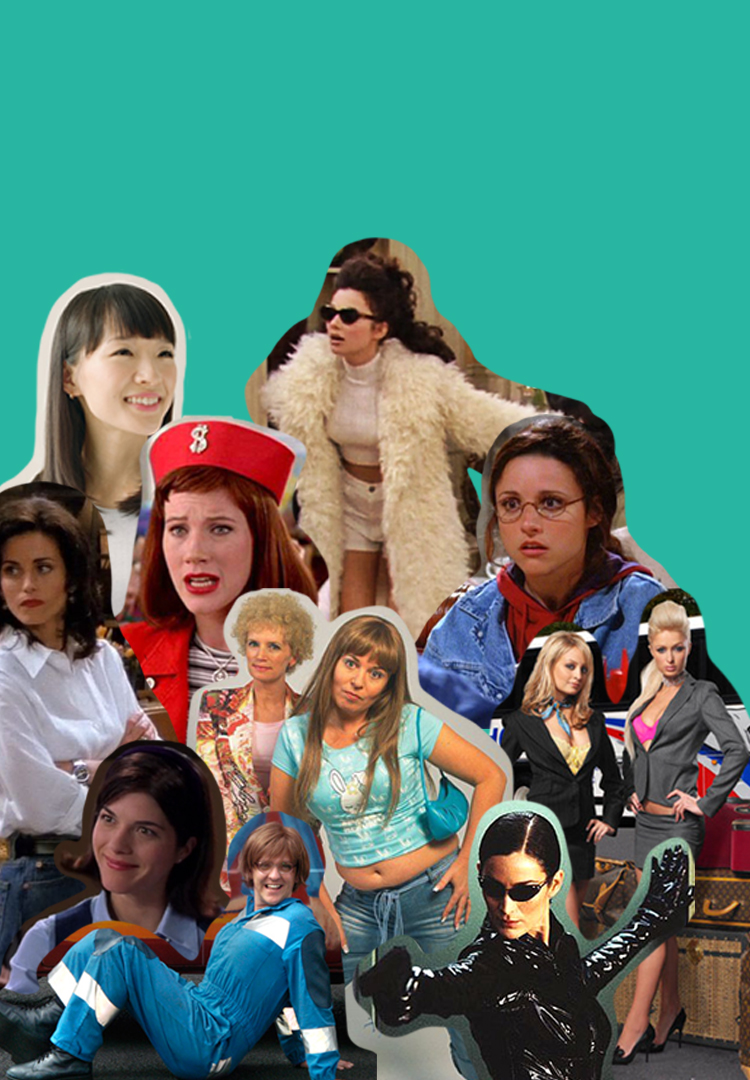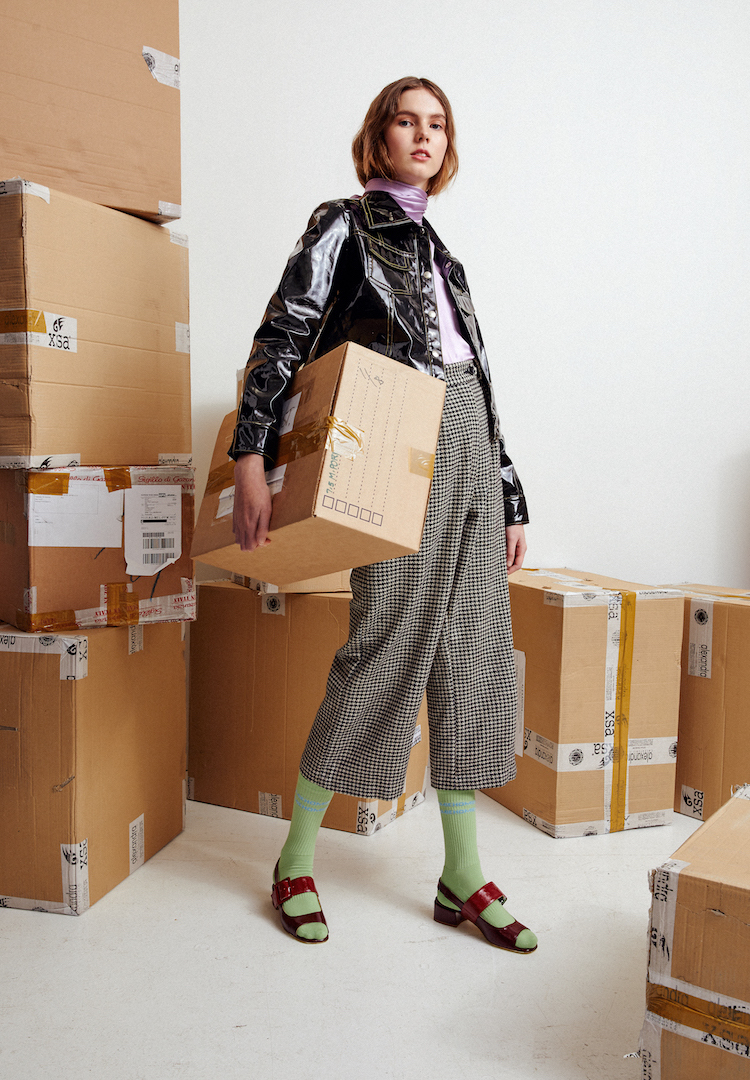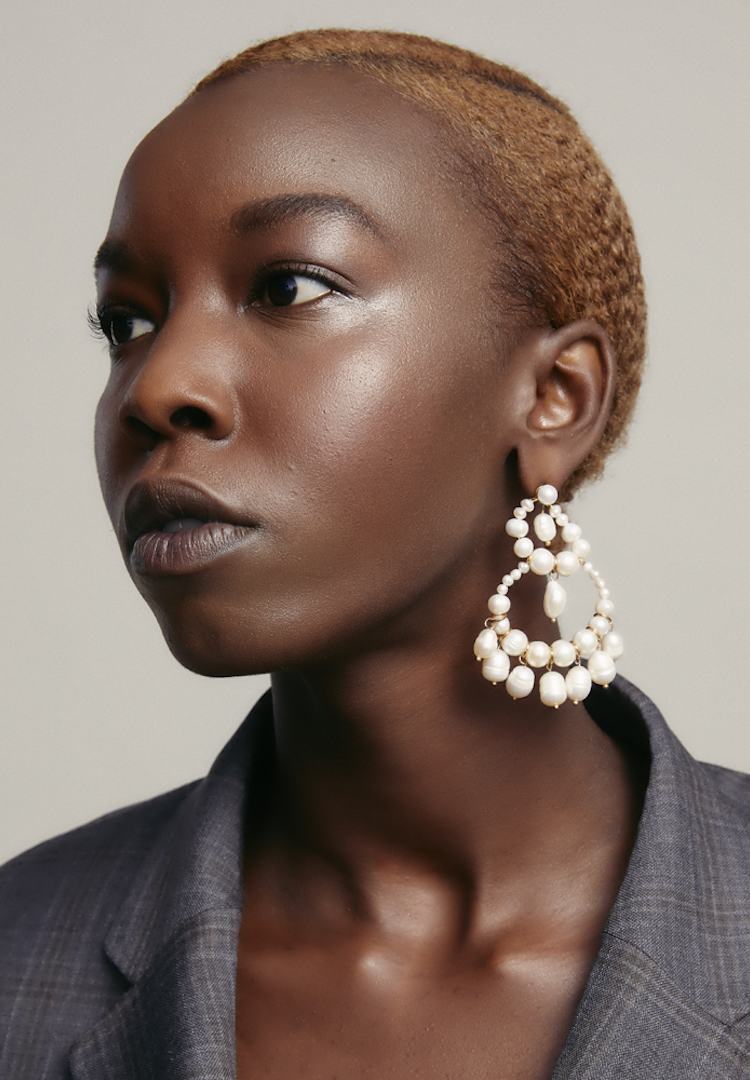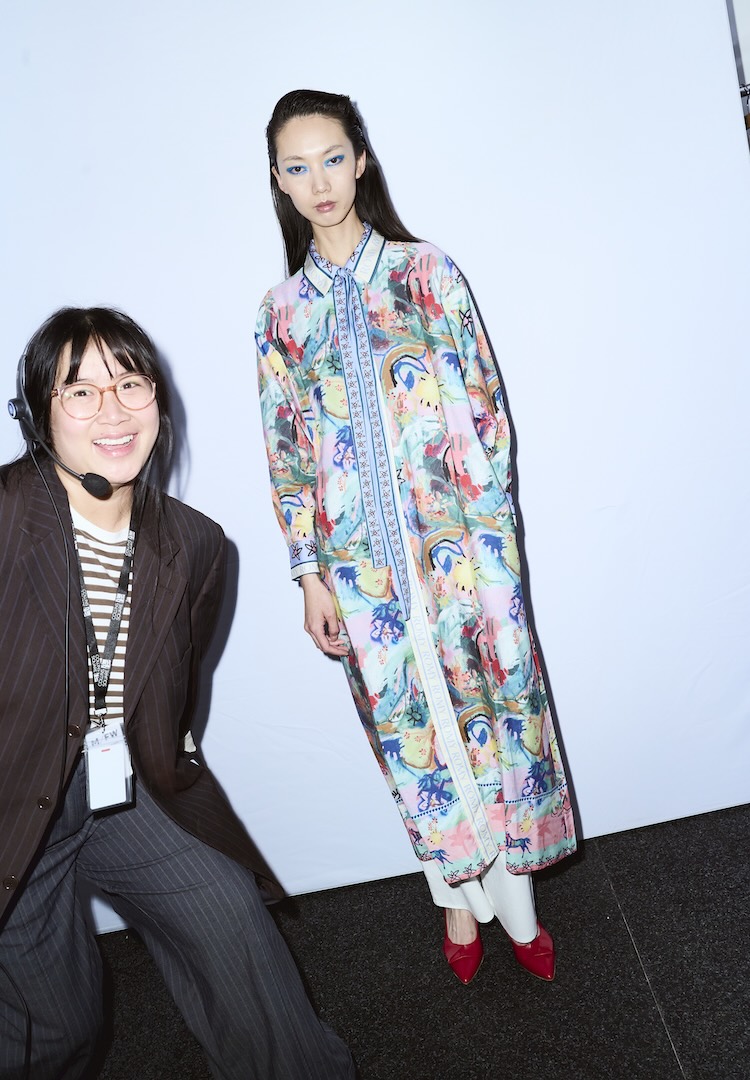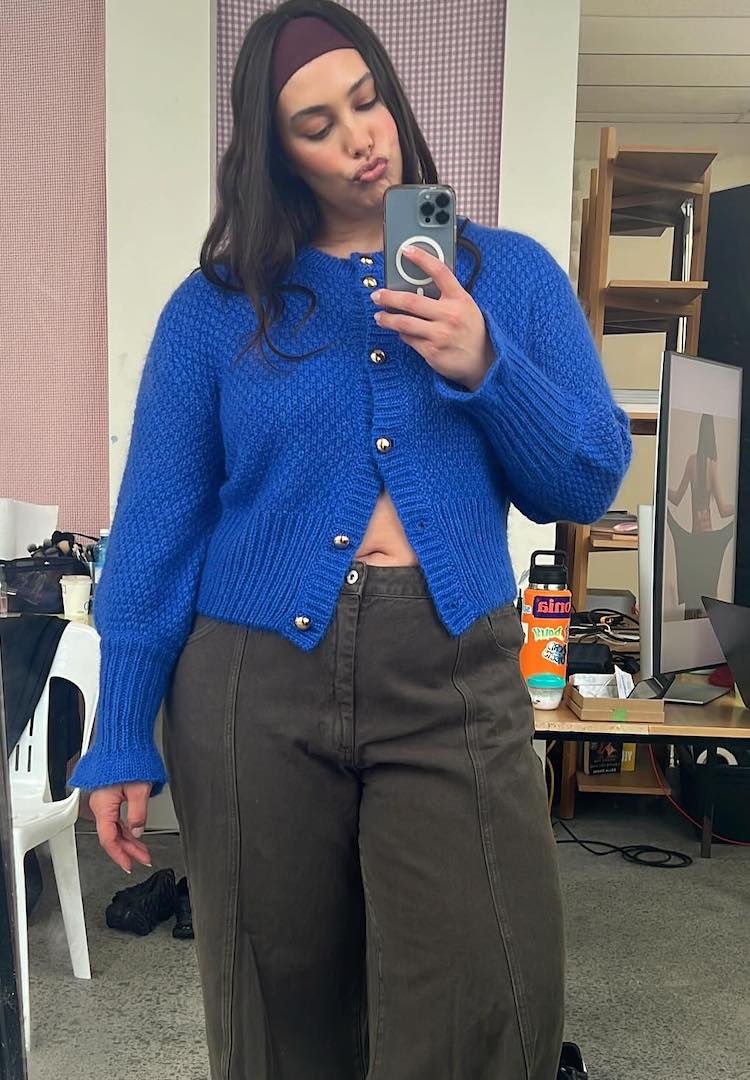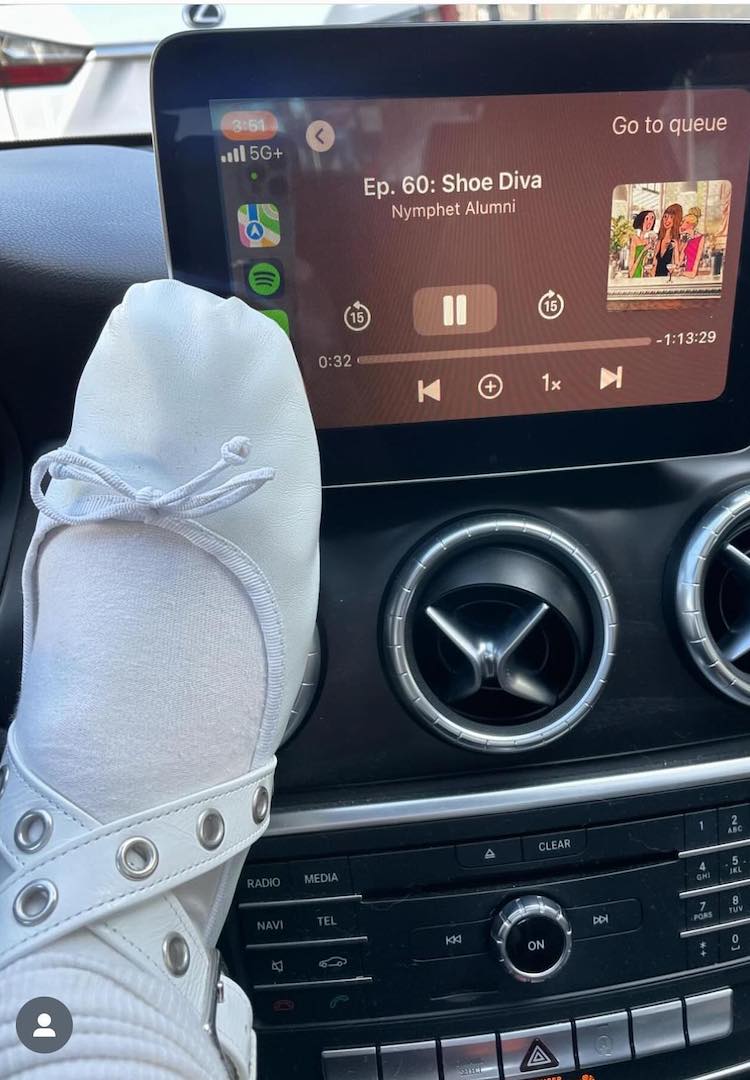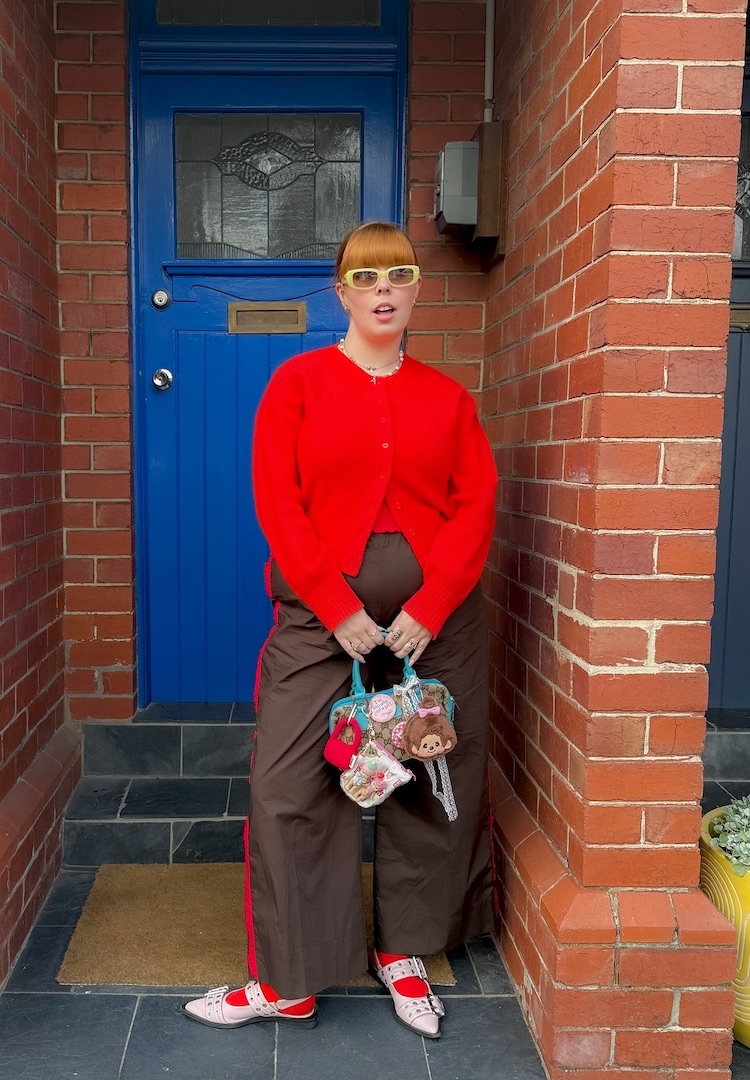What’s going to happen to Australian fashion once the pandemic is over?
IMAGES BY JESPER HEDE
WORDS BY JASMINE WALLIS
How will the coronavirus transform the fashion sector at home?
The Virgin Australia Fashion Festival was pumping as the week came to a close. With just three days left of shows and events, spectators and industry professionals were witnessing the latest of what the Australian fashion industry had to offer.
But on the afternoon of Friday, March 13, the Federal Government announced that due to the rapid spread of coronavirus, all events of 500 and over would be cancelled from Monday, March 16. Wanting to protect its guests, staff, and partners, Virgin Australia Fashion Festival decided to cancel the remaining days of its famous event that Friday night, including our very own National Graduate Showcase.
Since then, the coronavirus pandemic has truly flipped our world upside down. From strict lockdown laws and social distancing, to travel bans and job layoffs, our way of life has been drastically changed. We don’t know when this will end but one thing’s for sure, life won’t ever go “back to normal”.
The virus is decimating many industries with brutal economic and social consequences. One of those is the billion-dollar fashion industry. For the past few years, the fashion sector has been teetering on the edge of a massive overhaul. Conversations around sustainability and ethics have been at the forefront of the industry, the role of fashion shows has been questioned, and fast fashion and rampant consumerism are increasingly being called out.
The pandemic has pushed these conversations into overdrive as structures begin to crumble around us and we’re forced to ask ourselves some tough questions about what we want our future to look like.
While we’re in the middle of turbulent waters right now, just how will this virus shape our Australian fashion industry during and post-pandemic?
The immediate adaptation
Despite the grim outlook of a global pandemic, it hasn’t taken long for our industry to spring into action. Following in the footsteps of international labels, local brands have already pivoted, with Scanlan Theodore adapting its Fiji factory to start manufacturing personal protective equipment including medical gowns and masks.
The co-founder of Nobody Denim, John Condilis, offered up its factory in Melbourne’s north to the Federal Government to produce up to 12,000 masks and 5000 surgical gowns per week. While some businesses are offering garments to front-line workers, other brands, like Melbourne label E Nolan, have adapted in different ways. Famous for her chic made-to-measure suits, designer Emily Nolan has pivoted her traditional production towards custom-made pyjama sets. This way she can keep her business running and offer a luxurious and comfy outfit for her loyal customers to wear during isolation.
As an independent, local brand Emily is aware of the impact this is having on the fashion industry but is hopeful for the future, stating in an Instagram Story takeover for Fashion Journal, “I think, or hope at least, that consumers buying fashion and lifestyle items will care more about where they’re spending. The industry will be tough these next 12 months.”
Queensland jeweller Holly Ryan, known for her handcrafted and sustainable pieces, has also adapted her business model and is finding that this new world order is making it easier to connect with her customers. “Most of our staff members have been working from home since the lockdown began and we have been focusing a lot on direct-to-consumer sales through our online channels, as many retailers have had to close their doors. This has been a great chance to further connect with our incredibly loyal customers.”
As well as designers overhauling their businesses practically overnight, Showroom-X , a multi-brand e-commerce site, launched an initiative in early April to help unite the industry. Supported by the Australian Fashion Council and running from April 9 to 30, the #WeWearAustralian campaign aims to drive awareness and support to designer’s e-commerce websites. As thanks, select labels including KitX, Viktoria & Woods, Aje, Ellery, and more will be sharing offers on their new seasons and making a cash or clothing donation to Australian charities Dress for Success and Thread Together.
This campaign is all in a bid to save the national industry and support people at every level of running a fashion brand. Initiatives such as this will hopefully continue to make consumers think about the brands they are buying from, whether or not they are supporting local makers, and exactly who will profit from their purchasing habits during and post-pandemic.
Garment workers and the future of fast fashion
The ethics around fast fashion and mass-producing brands has been a fiery debate for a few years now and has reached boiling point during the coronavirus pandemic. A recent report published in Nature Reviews Earth & Environment states that the fashion industry produces over 92 million tonnes of waste and consumes 79 trillion litres of water per year.
And as the seventh anniversary of the Rana Plaza disaster passes us by, many garment workers in countries such as Bangladesh and Sri Lanka are still being paid under a living wage and made to work in unbearably tough conditions. Pair that with a pandemic, and the social issues surrounding the fashion industry are magnified.
Melinda Tually is one of the Fashion Revolution Australia coordinators, an organisation that’s celebrating people who are challenging the supply chains in fashion through transparency and education. Melinda also consults companies and brands in developing changes to their responsible sourcing. “The majority of our clothing is produced in nations where workers are already living in less than dignified conditions. The crisis only exacerbates their precarious existence. The threat of hunger and poverty is looming even larger than the virus itself,” she says.
According to a report by Bloomberg, European and US retailers have cancelled 1.5 billion dollars worth of orders from Bangladesh due to the coronavirus. This has huge knock-on effects for the workers who, in some cases, won’t get paid for clothes they’ve already made. It’s clear that an overhaul of the fast fashion system is needed and with the pandemic changing the way we live our lives and spend our money, could this be the end of fast fashion?
“I think it will influence all fashion from fast to luxury. The current culture of disposability is being questioned more than ever as we realise we actually need very little to get by. What we do need are items that are durable and adaptable to our way of life,” says Melinda.
Holly has also seen a slow down of her jewellery business and her own consumption as people begin to question what they really need during a global pandemic. “I think a lot of consumers are focused on quality over quantity right now. As customers, we are gravitating towards well-made fashion that makes us feel great and has been made responsibly.”
With job losses increasing and a recession waiting in the wings, people will naturally be more careful with money. When your income has been reduced or you’re not sure what markets are doing, an increase of the war-time ‘make-do and mend’ mentality may become more commonplace, something that has been increasingly forgotten about in our hyper-globalised-get-anything-at-the-click-of-a-button-world.
Brands such as Nudie Jeans and Birkenstock already had repair systems in place pre-corona but perhaps after this, more brands will join in the mentality of fixing what you have rather than purchasing constantly. On a similar note, charity and vintage shopping have already seen a surge in popularity due to their low environmental footprints. But with the pandemic having large economic ramifications and influencing imports, second-hand shopping may also increase out of necessity.
Going digital
Despite brick-and-mortar retail stores closing during the pandemic with no roadmap of when they’ll be re-opened, some Australian brands have seen a huge increase in online sales. In positive news for the local industry, Myer reported an increase in online shopping of 800 per cent over the Easter long weekend. This resulted in 2000 workers being rehired after the department store had to stand down 10, 000 workers at the end of March.
The most-bought items were household appliances – which makes sense considering the number of hours we’re spending at home – but the data also included beauty products and activewear. The sales of skincare, fragrances and makeup shot up a whole 7000 per cent compared to last year, and items such as sleep, lounge, and activewear were, unsurprisingly, at the top of people’s buying lists.
This data proves that people are still shopping, they’re just changing their habits and the items they need. The question is, how will this change the way we shop in the future? Online shopping has been some people’s preferred method of purchasing for years and with physical retail spaces having shuttered their windows for weeks, buying items from the comfort of your sofa may convert the non-converted.
So, we’ll be buying more of our fashion items online during and post-pandemic, but what about the trends? Typically, what you see in the department stores has been filtered down from luxury designers and international runways. The role and frequency of the fashion show has been questioned more with every season that passes and with news that we won’t have a vaccine for months, social distancing measures may need to be adopted for much longer than we first anticipated.
With the effects of these measures being felt across the globe, what will come of the seasonal fashion weeks? Over in London, the British Fashion Council announced that in June, London Fashion Week will be merging both the womenswear and menswear shows together to create one gender-neutral, digital platform. i-D magazine reports that storytelling will “lie at the heart” of this new platform as designers will share their inspirations and thought processes through digital interviews, podcasts and webinars.
Although VAMFF and MBFWA were both cancelled this year with no word yet on 2021, the Australian Fashion Council announced a new digital showroom to help Australian designers showcase their work to buyers. The AFC Virtual X ORDRE platform will help Australian designers continue the promotion of their new season collections both domestically and internationally during May and June through virtual showrooms.
The CEO of the Australian Fashion Council Leila Naja Hibri said of the platform, “Even though there is so much uncertainty right now, we must continue to innovate and look for ways to support Australian businesses in one of the toughest crises of our time.” This news is massive for the local industry as it means despite the pandemic’s impact on international travel and physical meetings, designers can still show their work for the Resort/Pre-Summer 2020 buying season.
Although the industry is powering on digitally this year, perhaps in the future there will be less seasonal trends in general and more onshore producing. Melinda hopes so, saying, “There are so many arguments in favour of having our own manufacturing base which has become even more evident as a result of the crisis. Maybe this will trigger the investment and government support that’s needed to make it happen. I think this [coronavirus] will drive more trans-seasonal collections and made-to-order offers as brands look to reduce their exposure and read the market, and the planet.”
Moving forward
As we spend our days indoors, and for some, our way of life slows to a speed we’ve never experienced before, we have the time to reflect on the systems that have previously served us and what they’ll mean in a post-pandemic world. Despite the feelings of chaos and uncertainty during this time, Australian brands, communities, and industry experts have united quickly to innovate the fashion sector and ensure its continuation.
This crisis has highlighted the power of working in and buying from local communities and gives us a springboard to step into a new future that we can design from the ground up. Melinda is hoping that the values of community and slow-consumption continue after this pandemic comes to an end. “There’s certainly a lot of conversation around whether there will be a sustained reset of our consumption habits and reevaluation of the status quo. I can certainly see that happening right now – seeds and chooks are sold out in a rush to be self-sustainable and a desire to connect with the basics. Will that stick? I really hope so, but it depends on how profoundly each of us are impacted.”
With the right tools, education, and reflection on our buying behaviour, the fashion industry can band together, support one another and hopefully move into a revolutionary new phase, both during and post-pandemic.

